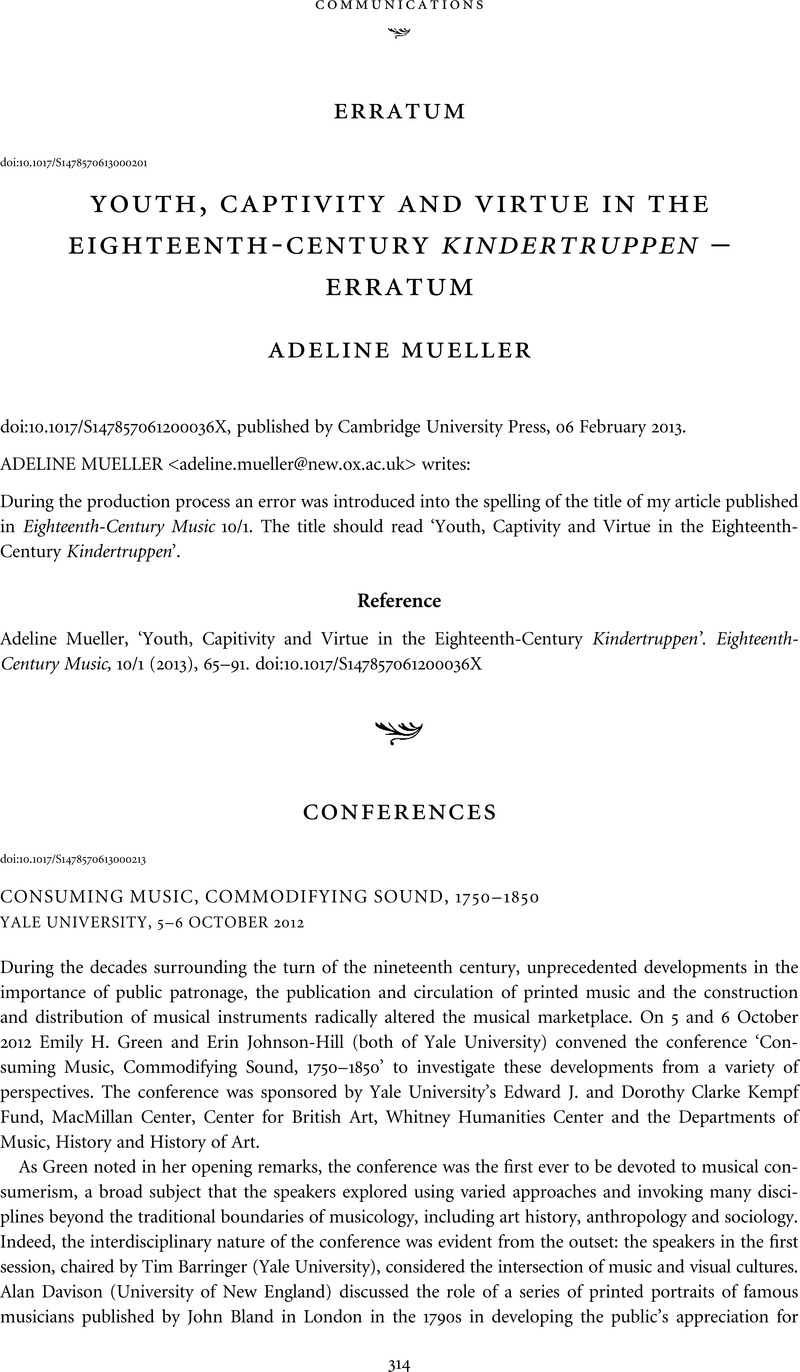No CrossRef data available.
Article contents
CONSUMING MUSIC, COMMODIFYING SOUND, 1750–1850
YALE UNIVERSITY, 5–6 OCTOBER 2012
Published online by Cambridge University Press: 01 August 2013
Abstract
An abstract is not available for this content so a preview has been provided. Please use the Get access link above for information on how to access this content.

- Type
- Communications: Conferences
- Information
- Copyright
- Copyright © Cambridge University Press 2013




